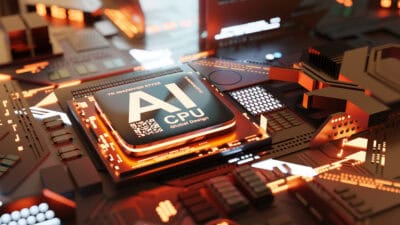Though the number of devices with a network connection is growing by the millions every year, that hasn’t exactly created a windfall for connectivity-chip maker Sierra Wireless (NASDAQ: SWIR). Semiconductors — even those for the fast-growing Internet of Things (IoT) movement — are a cyclical business, and suppliers are ultimately at the mercy of their end customers. Mobile computing, in particular, has been stuck in a rut of late — not a good sign for Sierra’s top or bottom line.
Nevertheless, second-quarter 2019 results showed that the company might be at or near a trough, and if that’s indeed the case, the stock just might be a steal right now.
An IoT company in transition
Sierra Wireless’ sales fell 5% in the second quarter compared with a year ago — even as sales were up 10% sequentially. Management has been cutting costs, and though expenses were higher year over year, there were one-time severance and transition costs totaling $18 million that distort the picture a bit. Backing out those items, adjusted net profit was $2.5 million, or $0.07 a share — better than the adjusted loss of $854,000 in Q1.
All in all, it’s going to be a down year for the IoT company, although management expects continued sequential improvement for the remaining quarters this year.
| Metric | 6 Months Ended June 30, 2019 | 6 Months Ended June 30, 2018 | Change |
|---|---|---|---|
| Revenue | $365 million | $389 million | (6%) |
| Gross profit margin | 31.1% | 33.8% | (2.7 pp) |
| Operating expenses | $147 million | $146 million | 0.5% |
| Earnings (loss) per share | ($1.09) | ($0.55) | N/A |
| Adjusted earnings per share | $0.05 | $0.36 | (86%) |
Data source: Sierra Wireless. Pp = percentage point.
On the way to a stronger business
The upside is that expenses are down, and Sierra’s IoT business continues to do well. IoT solution-specific sales — which include software and management solutions — grew 6% to $99.1 million in Q2 and carried a 37.1% gross profit margin. By contrast, embedded solutions — including routers, mobile networks equipment, and automotive products — fell 15% to $92.2 million and had a thin 24% gross margin. Thus, it’s at least heartening to see that the newer and higher-profit line of business is on the rise and taking the reins as Sierra’s primary mover and shaker.

Image source: Getty Images.
Headwinds will persist, however, especially from the important auto market as that industry continues to struggle with sluggish sales. Nevertheless, Sierra’s business overall is stabilizing, and the stock could be too cheap to ignore. Though the company is tiny in comparison with many of its peers and has more work to do to improve its bottom line, the number of products sold isn’t too far off from those of peers Cypress Semiconductor (NASDAQ: CY) and ON Semiconductor (NASDAQ: ON).
In particular, Cypress’ current valuation reflects why German chipmaker Infineon is acquiring the company. Just a few years ago, Cypress was in a predicament similar to Sierra’s. It doubled down on connectivity, reigniting growth and ultimately getting back to black on its bottom line. It’s not an exact comparison, but Sierra is close to running the same gross margin on product sold as Cypress and ON, and yet trades for a fraction of the valuation.
If it can sustain growth in its IoT segment and keep costs in check, a rebound could be nigh. One thing’s for sure, though: Some patience will be required with this small chipmaker.







